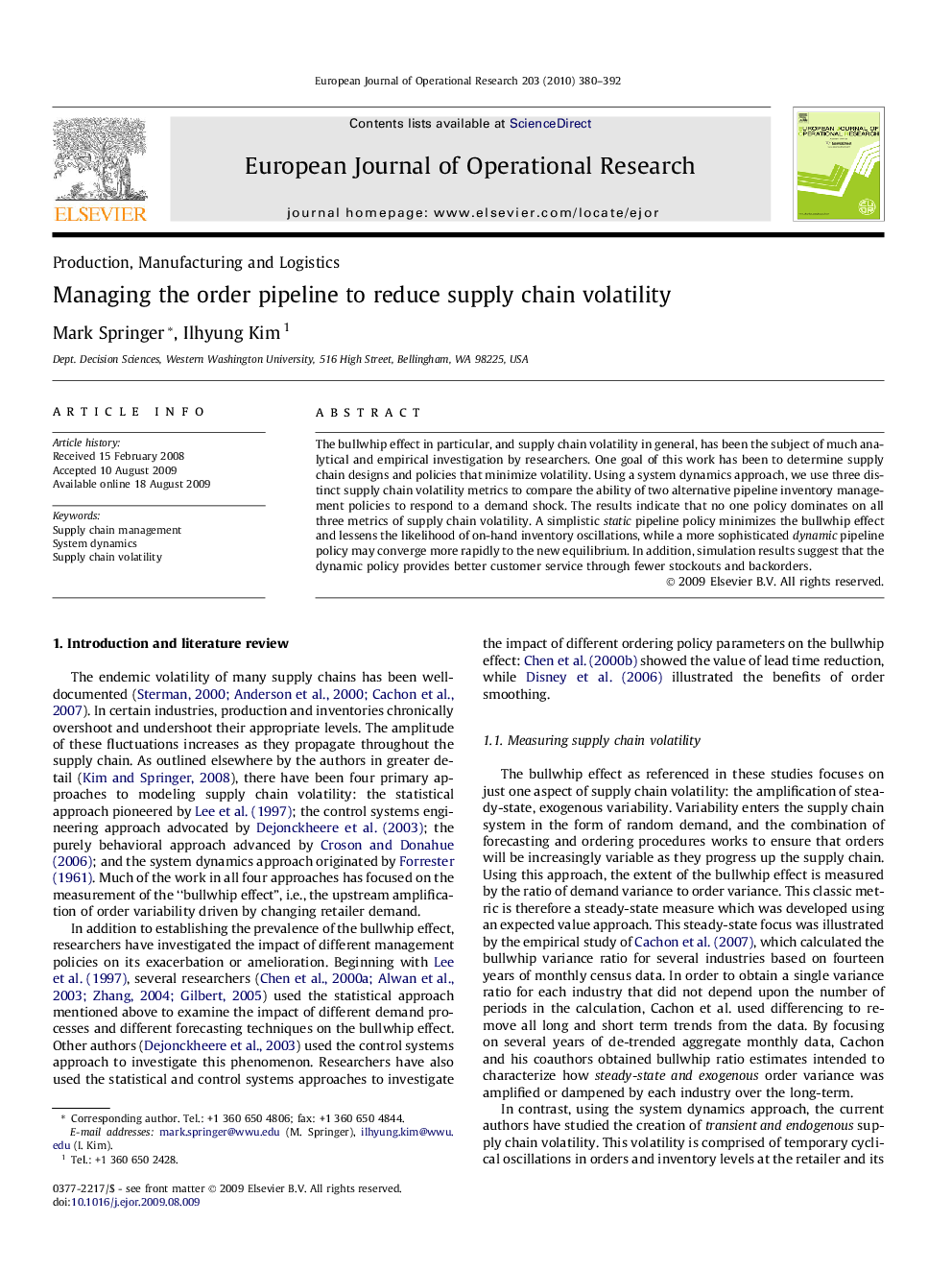| Article ID | Journal | Published Year | Pages | File Type |
|---|---|---|---|---|
| 480586 | European Journal of Operational Research | 2010 | 13 Pages |
The bullwhip effect in particular, and supply chain volatility in general, has been the subject of much analytical and empirical investigation by researchers. One goal of this work has been to determine supply chain designs and policies that minimize volatility. Using a system dynamics approach, we use three distinct supply chain volatility metrics to compare the ability of two alternative pipeline inventory management policies to respond to a demand shock. The results indicate that no one policy dominates on all three metrics of supply chain volatility. A simplistic static pipeline policy minimizes the bullwhip effect and lessens the likelihood of on-hand inventory oscillations, while a more sophisticated dynamic pipeline policy may converge more rapidly to the new equilibrium. In addition, simulation results suggest that the dynamic policy provides better customer service through fewer stockouts and backorders.
